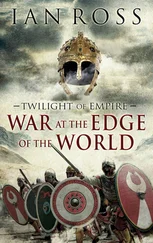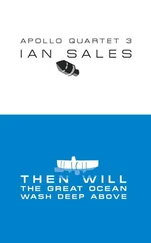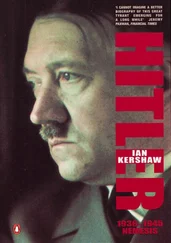161. Karl Wahl, ‘… es ist das deutsche Herz’: Erlebnisse und Erkenntnisse eines ehemaligen Gauleiters , Augsburg, 1954, p. 385. Almost twenty years later Wahl produced a very similar, but if anything even more apologetic, version of the meeting, in Karl Wahl, Patrioten oder Verbrecher , Heusenstamm bei Offenbach am Main, 1973, pp. 155–61.
162. Wahl, ‘… es ist das deutsche Herz’ , p. 386.
163. Rudolf Jordan, Erlebt und erlitten: Weg eines Gauleiters von München bis Moskau , Leoni am Starnberger See, 1971, pp. 251–8 (quotations, pp. 257–8).
164. TBJG , II/15, p. 323 (6.2.45); Speer, p. 431.
165. TBJG , II/15, p. 377 for Hitler’s recognition that Yalta meant there would be no break in the coalition; and p. 381 for the communiqué, and Goebbels’ reaction to it. A British intelligence report on 22 February suggested that ‘the very hopelessness of Germany’s fate after the war may be one of the reasons for the continuance of a struggle which daily becomes more desperate’.—Hastings, Armageddon , p. 417. For the negotiations at Yalta, see DRZW , 10/2 (Loth), pp. 289–300. The outcome of the Conference was not immediately made known to the German public, though detailed information—gleaned in the main from illicit listening to foreign broadcasts—soon seeped out.— Das letzte halbe Jahr , pp. 251–2 (23.2.45).
166. Speer, p. 433.
CHAPTER 7. CRUMBLING FOUNDATIONS
1. BA/MA, MSg2/2697, diary of Lieutenant Julius Dufner, fo. 151, 7.4.45.
2. On all fronts, the Germans could muster in early 1945 almost 320 weakened divisions, including those tied up in peripheral areas such as Norway and the Courland. East and west, their enemies faced them with around 630 full-strength divisions, nearly 500 of them on the eastern front alone.—http://www.angelfire.com/ct/ww2europe/stats.html.
3. The film was awarded a number of prizes. It appears, however, to have run for only a few days in Berlin, and to have been shown mainly for Party members and for the Wehrmacht. See David Welch, Propaganda and the German Cinema 1933–1945 , Oxford, 1983, p. 234. Hitler, according to Goebbels, was delighted at the impact of the film, which was said to have made a huge impression on the General Staff.— TBJG , II/15, p. 370 (12.2.45).
4. BAB, NS6/134, fo. 14, Kurzlage des Ob.d.M., 17.3.45. Himmler requested, though with little effect, assistance from Karl Kaufmann, Gauleiter of Hamburg and Reich Commissar for Shipping, on 8 March in providing ships to transport refugees from Danzig.—BAB, NS19/2606, fos. 60–61, Himmler’s request—passing on one to him from Gauleiter Albert Forster—and reply from Kaufmann, 8.3.45.
5. Goebbels wanted to block mention of the evacuation in the Wehrmacht report. ‘On account of the strong psychological effects of the Kolberg film, we can do without that at present,’ he noted.— TBJG , II/15, p. 542 (20.3.45).
6. BA/MA, N647/13, NL Balck, Kriegstagebuch, Bd. 12, fo. 13.
7. The above course of military events draws upon: DZW , 6, pp. 517–61; DRZW , 10/1(Zimmermann), pp. 409–43, (Lakowski), pp. 550–608; DRZW , 8 (Ungváry), pp. 919–43; Lothar Gruchmann, Der Zweite Weltkrieg , pb. edn., Munich, 1975, pp. 418–35; Heinz Guderian, Panzer Leader , Da Capo edn., New York, 1996, pp. 411–29; Brian Taylor, Barbarossa to Berlin: A Chronology of the Campaigns on the Eastern Front 1941 to 1945 , vol. 2, Stroud, 2008, pp. 280–306; John Erickson, The Road to Berlin , Cassell edn., London, 2003, pp. 443–7, 508–26; Klaus-Dietmar Henke, Die amerikanische Besetzung Deutschlands , Munich, 1995, pp. 343–64, 377–90; Gerhard L. Weinberg, A World at Arms: A Global History of World War II , Cambridge, 1994, pp. 798–802, 810–14; Antony Beevor, Berlin: The Downfall 1945 , pb. edn., London, 2007, ch. 8; Max Hastings, Armageddon: The Battle for Germany 1944–45 , London, 2004, ch. 12.
8. Kurt Pätzold and Manfred Weißbecker, Geschichte der NSDAP 1920–1945 , Cologne, 1981, p. 378.
9. BAB, NS6/137, fo. 6, Vermerk from Willi Ruder, head of the Arbeitsstab für NS-Führungsfragen in the Party Chancellery, 5.3.45; fo. 29, draft circular for distribution to the Gauleiter, 5.3.45.
10. The V1 cruise-missile and V2 rocket had long since failed to live up to expectations. Shortages of fuel and pilots greatly restricted the deployment of the Me262 fighter, jet-propelled and with higher speeds than anything the Allies could match. Only 200 or so were used, with heavy losses, and prototype new rockets and planes were barely in production by the time hostilities ceased.— DRZW , 10/1(Boog), pp. 828–9. Only a handful of the fleet of new, technologically advanced U-boats, which Dönitz persuaded Hitler would prove so crucial, were available by the end of the war.—Howard D. Grier, Hitler, Dönitz and the Baltic Sea: The Third Reich’s Last Hope, 1944–1945 , Annapolis, Md., 2007, pp. xviii–xix, 170–79.
11. BAB, NS6/137, fos. 19–21, draft of propaganda directives for the Wehrmacht, 9.3.45.
12. BAB, NS6/136, fos. 1, 16–19, Parteirednereinsatz, 6.3.45,13.3.45, 24.3.45.
13. BAB, NS6/137, fos. 9–14, Vorlage, probably for Pg. Gerhard Klopfer, from SS-Obersturmbannführer Dr Beyer, of SD office III/V, with attached partial copy of the sketch of a lecture by SS-Obersturmbannführer von Kilpinski and covering letter of 19.3.45 from Ernst Kaltenbrunner, head of the SD, 20.3.45.
14. BAB, R55/610, fos. 182–3, Westfalen-Süd, Merkpunkte zur Versammlungsaktion Februar/März 1945, 12.3.45.
15. Das letzte halbe Jahr: Stimmungsberichte der Wehrmachtpropaganda 1944/45 , ed. Wolfram Wette, Ricarda Bremer and Detlef Vogel, Essen, 2001, p. 310 (31.3.45).
16. BA/MA, MSg2/2697, diary of Lieutenant Julius Dufner, fos. 123–7 (entries for 5, 7, 9, 12.3.45). Hitler did not lay the wreath in Berlin on the final ‘Heroes’ Memorial Day’. Göring substituted for him.
17. BAB, R55/622, fo. 181, Briefübersicht Nr. 10, 9.3.45.
18. BAB, NS6/137, Der Reichspropagandaleiter der NSDAP an alle Gaupropagandaleiter, 5.3.45.
19. TBJG , II/15, p. 471 (11.3.45).
20. Guderian, p. 427.
21. BAB, NS6/169, fos. 115–21, Guderian to Bormann, 26.2.45; Bericht des Dienstleiters der Partei-Kanzlei, Pg. Mauer, undated. The characteristic demeaning of General Staff officers, part of the standard reportage of Party propagandists, is repeated, for example, in NS6/374, fo. 18, report to Dr Gerhard Klopfer, head of Abteilung III (Staatliche Angelegenheitern) in the Party Chancellery, by Oberleutnant Koller, part of the Sondereinsatz team, 16.3.45, and in NS6/140, fos. 44–5, Vorlage for Bormann, signed by Willi Ruder, 6.3.45, offering critical comments on General Staff officers attending an NSFO course in Egerndorf. Even Goebbels rejected the constant attempt to make Wehrmacht officers the scapegoats for the military defeats of the previous two years as a crass oversimplification, with harmful consequences for the authority of officers.— TBJG , II/15, p. 406 (3.3.45). The Party Chancellery itself thought the repeated talk about sabotage and failure of officers (which for long it had promoted) had to be halted if trust between the Party leadership and the Wehrmacht was to be improved.—NS6/137, fo. 27, Vorlage for Bormann, 7.3.45.
22. BAB, NS19/2068, fos. 57, 65, Meldungen aus dem Ostraum, 15.3.45 (includes reports from Danzig, Stettin and Küstrin); in addition, for Küstrin, NS6/135, fos. 190, 192–8, part of a long report for Borman from the Kreisleiter of Küstrin-Königsberg, 5.4.45.
23. BAB, NS6/354, fos. 100–101 v, Bormann: Rundschreiben 156/45g, Plünderungen durch deutsche Soldaten in geräumten Gebieten, to Gauleiter and other Party functionaries, 24.3.45, attaching a copy of Keitel’s order of 8.3.45 threatening punishment by court martial for any soldier suspected of looting. See also NS6/135, fo. 83, Pg. Noack (of Abt. IIF of the Party Chancellery, Arbeitsstab für NS-Führungsfragen) to NS-Führungsstab der Wehrmacht, reporting complaints about plundering of property by soldiers, 14.3.45; and fo. 199, Vermerk für Pg. Stosch, re plundering, 19.3.45.
Читать дальше












